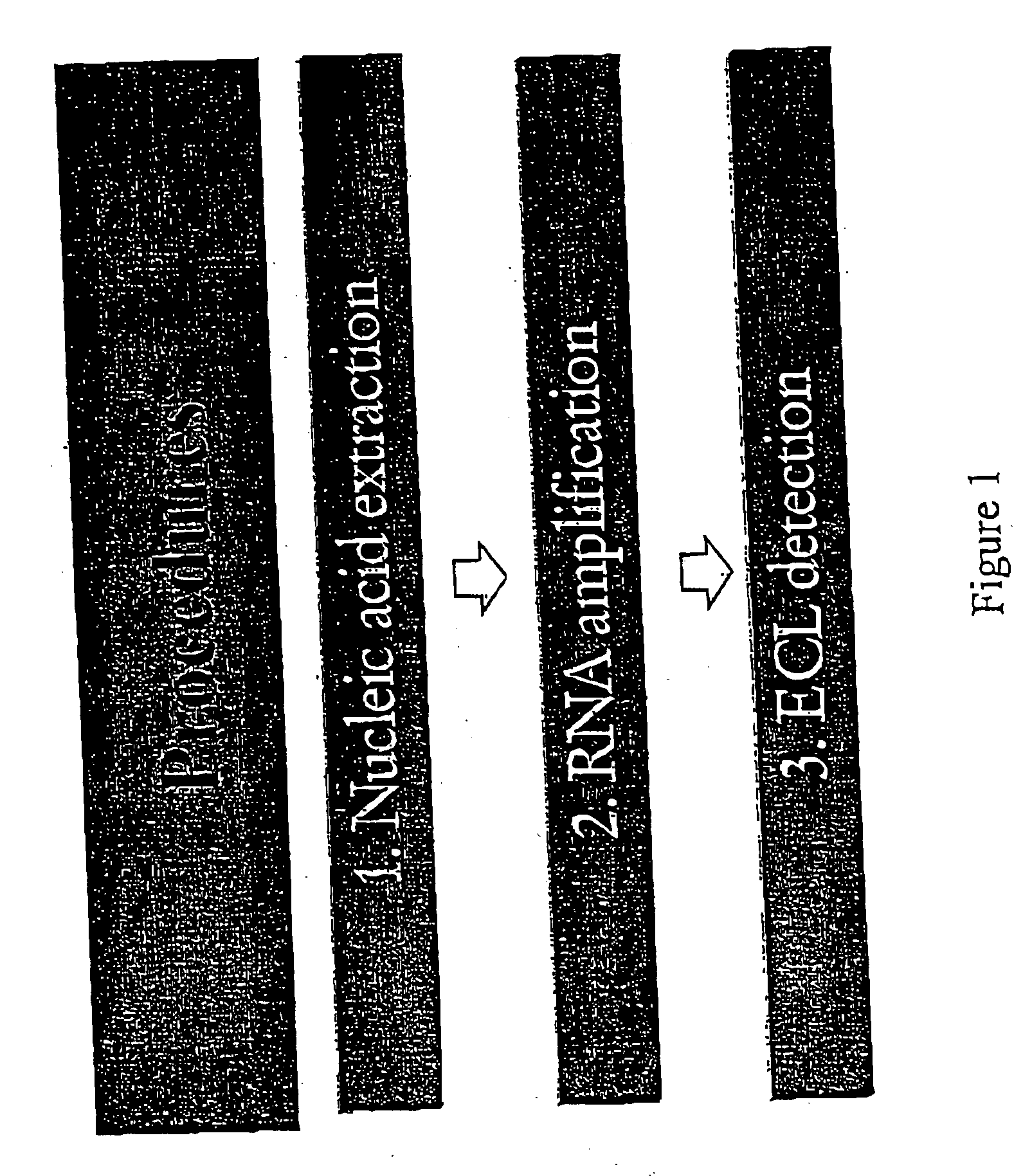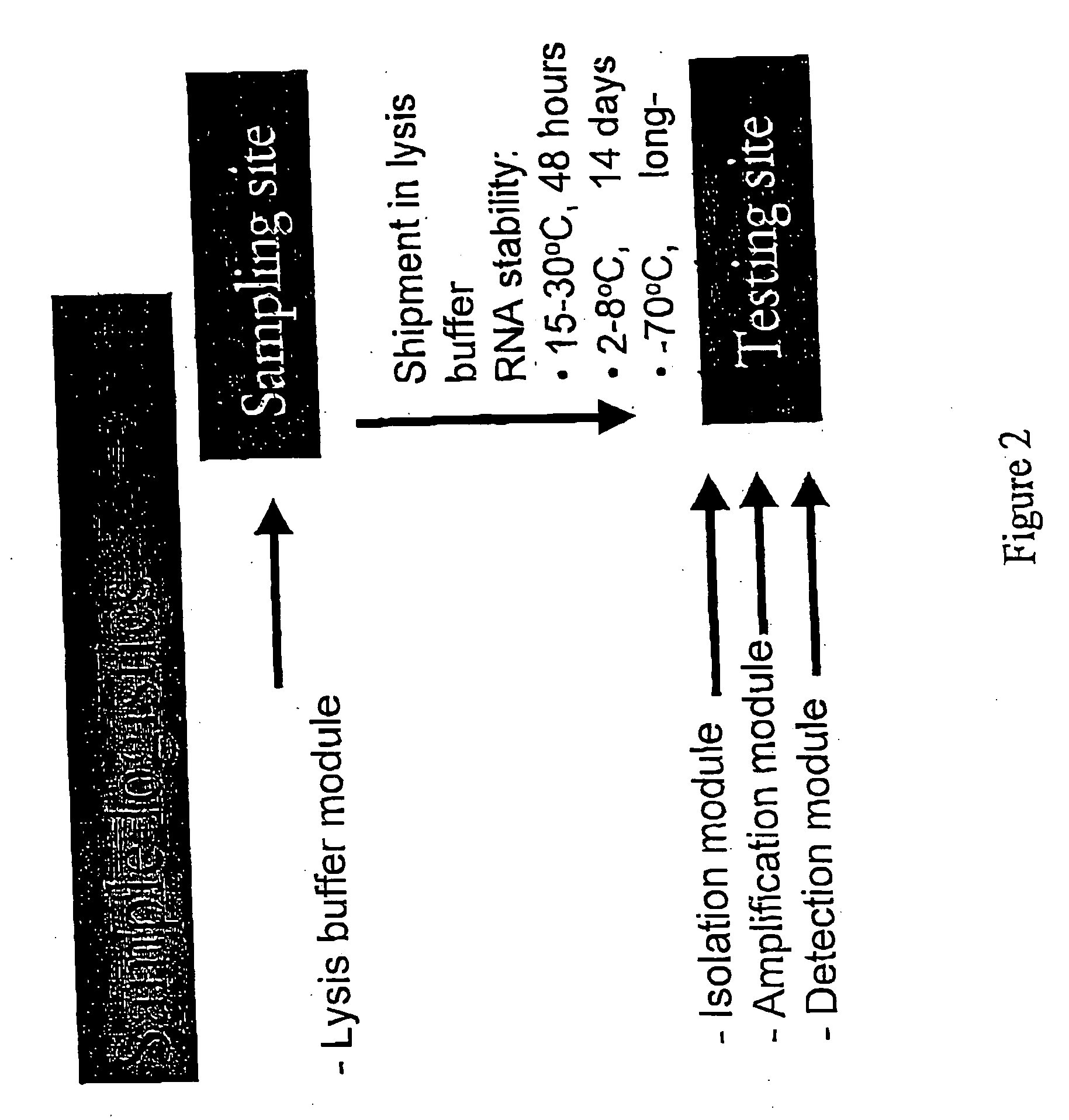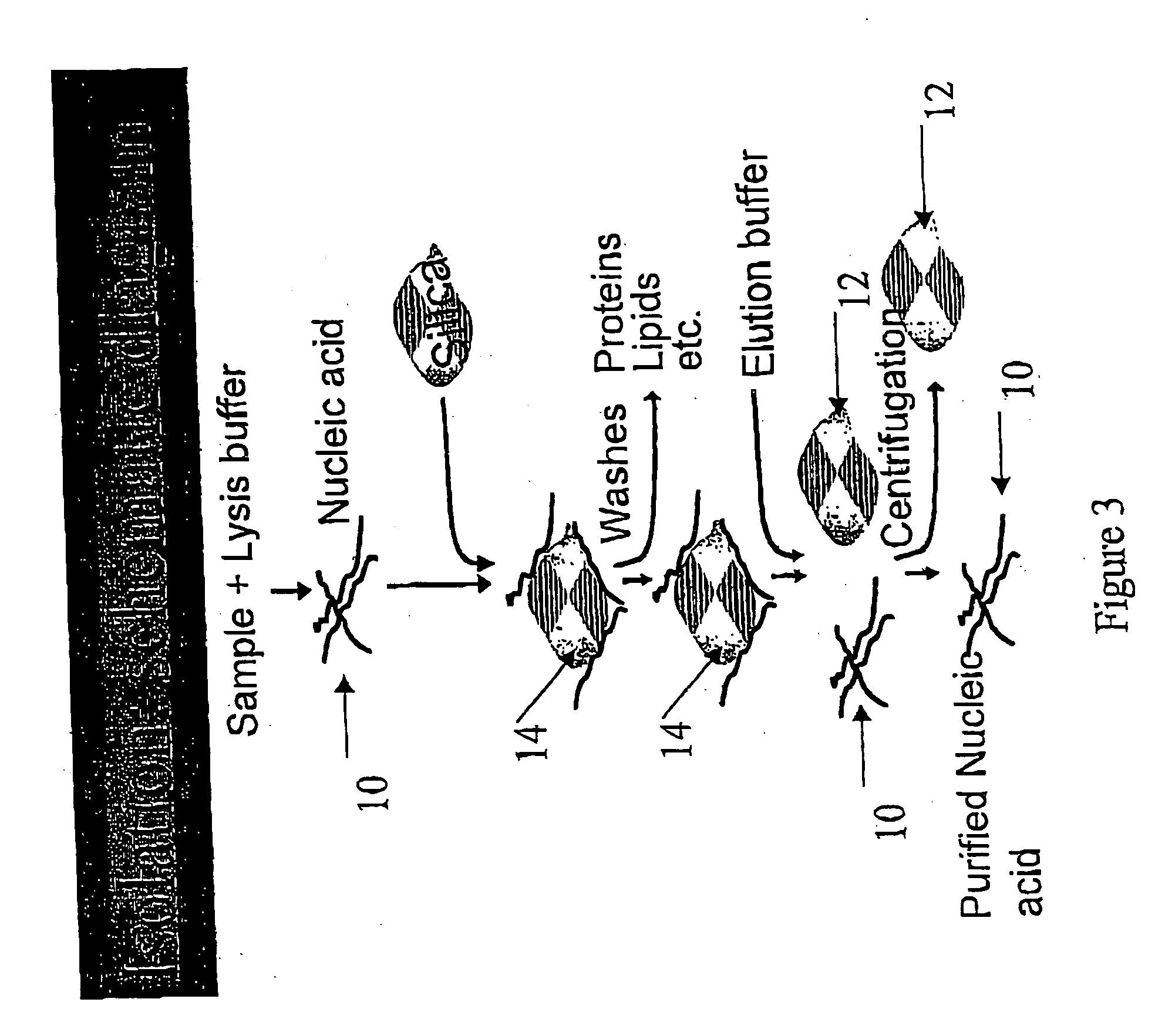Kit for detecting non-pathogenic or pathogenic influenza a subtype h5 virus
kit technology, applied in the field of kits for detecting non-pathogenic or pathogenic influenza a subtype h5 virus, can solve the problems of low sensitivity and low specificity, the detection time may be too long for routine detection purposes, and the method is relatively difficult to be utilized, so as to achieve the effect of improving sensitivity and specificity
- Summary
- Abstract
- Description
- Claims
- Application Information
AI Technical Summary
Benefits of technology
Problems solved by technology
Method used
Image
Examples
Embodiment Construction
[0095] The detailed components of the detection kit of this example are listed as follows:
[0096] A. Lysis Buffer
[0097] 50.times.0.9 ml Lysis buffer (5M guanidine thiocynante, Triton X-100, Tris / HCl)
[0098] B. Nucleic Acid Isolation Components
[0099] 5.times.22 ml Wash Buffer (5M guanidine thiocyanate, Tris / HCl)
[0100] 5.times.0.8 ml Silica (Hydrochloric acid-activated silicon dioxide particles)
[0101] 5.times.1.5 ml Elution buffer (Tris / HCl)
[0102] C. Nucleic Acid Amplification Components
[0103] 5.times.60 .mu.l Enzyme solution (Avian Myoblastosis Virus-Reverse Transcriptase (AMV-RT), RNase-H, T7 RNA polymerase stabilized with bovine serum albumin)
[0104] 5.times.10 mg Reagent spheres (lyophilised spheres with nucleotides, dithiothreitol and MgCl.sub.2). Contained in a foil pack with silica gel desiccant
[0105] 1.times.0.6 ml Reagent sphere diluent (Tris-HCl, 45% DMSO)
[0106] 1.times.1.6 ml KCl solution
[0107] 1.times.70 .mu.l H5-primer mixture
[0108] D. Nucleic Acid Detection Components
[0109]...
PUM
 Login to View More
Login to View More Abstract
Description
Claims
Application Information
 Login to View More
Login to View More - R&D
- Intellectual Property
- Life Sciences
- Materials
- Tech Scout
- Unparalleled Data Quality
- Higher Quality Content
- 60% Fewer Hallucinations
Browse by: Latest US Patents, China's latest patents, Technical Efficacy Thesaurus, Application Domain, Technology Topic, Popular Technical Reports.
© 2025 PatSnap. All rights reserved.Legal|Privacy policy|Modern Slavery Act Transparency Statement|Sitemap|About US| Contact US: help@patsnap.com



